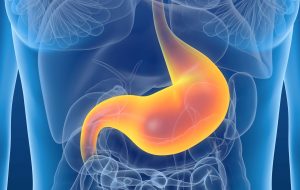With the rise of fast food chains and processed snack options, junk food has become a staple in many children’s diets. However, the consumption of junk food is profoundly unhealthy for children on multiple levels. Let’s delve deeper into why junk food poses such a significant risk to children’s health and well-being. Junk foods are high in calories but low in essential nutrients like vitamins, minerals, and fiber. This can lead to nutrient deficiencies, which are crucial for children’s growth and development. Without an adequate intake of these vital nutrients, children may experience stunted growth, weakened immune systems, and cognitive impairments. It’s not just about what’s missing, but also about what’s included in these foods that can cause harm.
Nutrient Deficiency
The Essential Nutrients Missing
Children require a balanced diet rich in vitamins and minerals to support their rapid growth and development. Junk foods often lack these essential nutrients. For example, vitamin D and calcium are critical for bone development, yet they’re rarely found in adequate amounts in fast food or sugary snacks. This deficiency can increase the risk of bone fractures and osteoporosis later in life. Iron is another critical nutrient often missing, vital for oxygen transport in the blood. A lack of iron can lead to anemia, characterized by fatigue and weakness, which can severely impact a child’s ability to concentrate and perform in school.
Real-Life Example
Consider the case of a 10-year-old child consuming a diet high in fast food. Such a diet might include a burger, fries, and a sugary drink for lunch. While this meal might provide the necessary calories, it falls short on iron and vitamin C, crucial for preventing anemia and supporting the immune system. Over time, this dietary pattern can lead to frequent illnesses and fatigue. Additionally, the same child may show signs of delayed cognitive development and physical growth, which can be attributed to a lack of nutrients like zinc and magnesium, often missing in junk food.
Obesity and Chronic Diseases
The Role of Added Sugars and Unhealthy Fats
Junk food is often high in added sugars, unhealthy fats, and refined carbohydrates, which can contribute to obesity and chronic diseases like type 2 diabetes, heart disease, and hypertension in children. These unhealthy components lead to weight gain, insulin resistance, and a higher risk of developing serious health conditions at a young age, setting the stage for a lifetime of health challenges. The consumption of trans fats, commonly found in fried foods and baked goods, is particularly concerning as they raise bad cholesterol levels and lower good cholesterol, contributing to heart disease risk.
Statistics and Trends
According to the Centers for Disease Control and Prevention (CDC), the prevalence of obesity among children and adolescents in the United States has tripled since the 1970s. This alarming trend correlates strongly with the increased consumption of junk food, as these high-calorie, low-nutrient foods become more accessible and marketed directly to children. A study by the World Health Organization (WHO) also highlights that nearly 340 million children and adolescents aged 5-19 were overweight or obese in 2016, a number that continues to rise with the global spread of Western dietary patterns.
Practical Tips for Parents
- Read Labels: Familiarize yourself with nutrition labels. Look for foods lower in added sugars and trans fats.
- Home-Cooked Meals: Encourage home-cooked meals using fresh ingredients. This not only helps control the nutritional content but also involves children in the cooking process, making them more aware of what they’re eating.
- Healthy Alternatives: Swap sugary drinks for water or milk and opt for fruits or vegetables as snacks instead of chips or candy.
- Portion Control: Teach children to understand portion sizes. Even healthy foods can contribute to weight gain if consumed in excessive amounts.
- Limit Eating Out: Try to reduce the frequency of dining out as restaurant meals often contain hidden sugars, fats, and larger portion sizes.
Impact on Mental Health
How Junk Food Affects the Brain
Research has shown that a diet high in junk food can have negative effects on children’s mental health, leading to symptoms of depression, anxiety, and poor cognitive function. The lack of essential nutrients and the presence of harmful additives in junk food can disrupt brain chemistry and neurotransmitter function, impacting mood regulation, stress levels, and overall cognitive abilities in children. High sugar intake can cause spikes and crashes in blood sugar levels, leading to mood swings and irritability.
Case Study: Dietary Changes and Mental Health
A study conducted by the University of Eastern Finland found that children who adhered to a diet high in fish, vegetables, and whole grains had a reduced risk of depression compared to those who consumed a diet high in processed foods and sugary snacks. This highlights the importance of diet in maintaining not just physical health but mental well-being as well. Similarly, research from Deakin University in Australia found that children who switched to a Mediterranean diet showed significant improvement in mood and cognitive functioning within just a few months.
Developmental Issues
Cognitive and Behavioral Impacts
The consumption of junk food has been linked to cognitive impairment, behavioral problems, and even lower academic performance in children. High levels of processed sugars and fats can impair brain function and cognitive development, resulting in difficulties with memory, learning, and decision-making skills. Additionally, behavioral issues such as hyperactivity and aggression have been associated with the intake of junk food, affecting a child’s social interactions and academic success. Artificial colorings and preservatives found in many processed foods have been shown to exacerbate symptoms of attention-deficit hyperactivity disorder (ADHD) in some children.
Steps to Mitigate Developmental Issues
- Structured Meal Times: Establish regular meal times to promote healthy eating patterns and reduce the likelihood of impulsive snack choices.
- Nutrient-Dense Foods: Introduce a variety of nutrient-dense foods early on to develop a palate for healthier options.
- Education: Teach children about the importance of nutrition and how different foods can affect their body and mind.
- Limit Screen Time: Encourage activities that engage the brain away from screens, such as reading or puzzles, to support cognitive development alongside proper nutrition.
- Mindful Eating: Encourage children to eat slowly and mindfully, which promotes better digestion and helps them recognize feelings of fullness.
Preventing Healthy Eating Habits
Influence on Long-Term Eating Patterns
Introducing children to junk food at a young age can disrupt their taste preferences and make it harder for them to develop healthy eating habits later in life. This can set them up for a lifetime of poor food choices and potential health problems. Once children develop a taste for highly processed and sugary foods, they may find it challenging to appreciate the flavors and benefits of whole, nutritious foods, leading to a cycle of unhealthy eating habits that persist into adulthood. This is often compounded by the marketing tactics used by junk food companies, which target children with colorful packaging and enticing advertisements.
Encouraging Healthy Habits
- Lead by Example: Children often mimic the eating habits of their parents or caregivers. By choosing healthy foods yourself, you set a positive example.
- Positive Reinforcement: Reward healthy eating choices to reinforce positive behavior. This could be through praise or small non-food-related rewards.
- Involvement in Meal Prep: Let children help with meal planning and preparation. This involvement can increase their interest in trying new, healthier foods.
- Diverse Diet: Introduce a wide variety of foods and flavors to children early on to expand their palate and help them appreciate different tastes.
- Storytelling: Use stories or characters to make healthy foods more appealing. For example, explaining how “superhero” foods can make them strong and healthy can be a fun way to introduce new foods.
The Role of Schools and Communities
School Lunch Programs
School lunch programs have the potential to be powerful tools in promoting healthy eating habits among children. By providing balanced meals that include fruits, vegetables, whole grains, and lean proteins, schools can ensure that children receive at least one healthy meal a day. Unfortunately, many programs are underfunded and rely on processed, less nutritious foods. Schools can improve this by partnering with local farms to source fresh produce or by implementing garden initiatives where students can grow and learn about healthy foods firsthand.
Community Initiatives
Communities can play a significant role in combating the prevalence of junk food. Farmers’ markets, community gardens, and local workshops on nutrition can provide families with access to fresh produce and education on healthy eating. These initiatives can also foster a sense of community and shared responsibility for the health of future generations. Collaborations between local governments, schools, and health organizations can lead to more comprehensive programs that address food deserts and improve access to nutritious options for all families.
Advertising and Media Influence
The Power of Marketing
Junk food advertising is pervasive and often specifically targets children through television, online platforms, and social media. These advertisements create an allure around junk food, portraying it as fun and desirable, often using popular characters to attract young audiences. This advertising not only increases demand for these unhealthy products but also shapes children’s perceptions of what constitutes normal eating behavior.
Counteracting Negative Influences
- Media Literacy Education: Teach children to critically evaluate advertisements and understand the persuasive techniques used by marketers.
- Parental Controls: Use parental controls to limit exposure to junk food advertising on digital platforms.
- Promoting Positive Media: Encourage content that promotes healthy eating and active lifestyles, such as cooking shows or educational games about nutrition.
- Advocacy: Support policies that limit junk food advertising aimed at children and promote healthier options in media.
By taking these comprehensive steps, we can collectively work towards reducing the impact of junk food on children’s health, ensuring they have the best chance at a healthy, fulfilling life.



